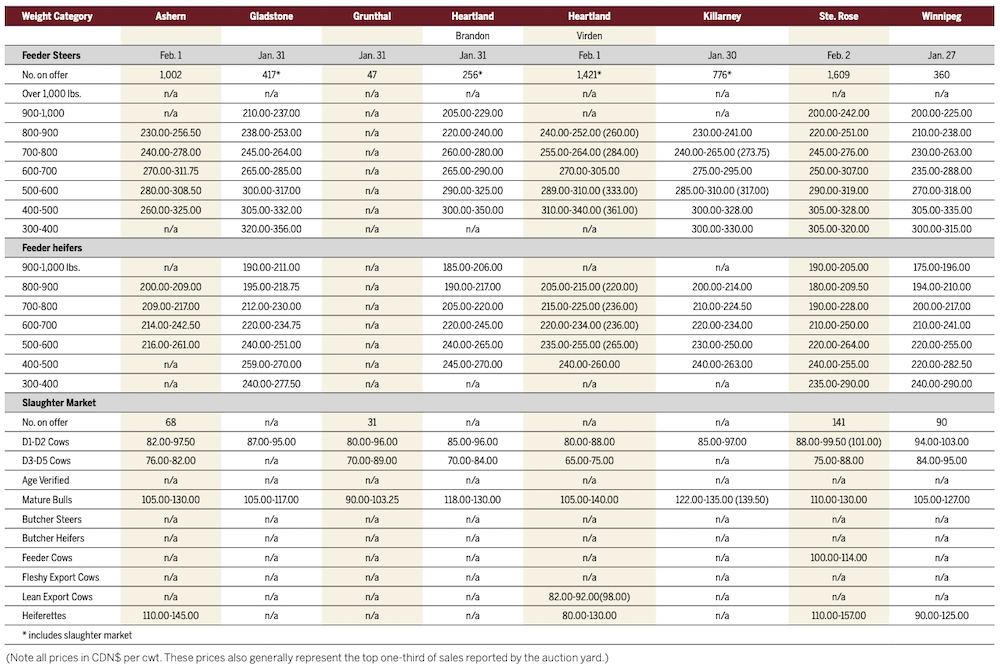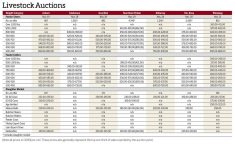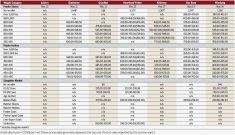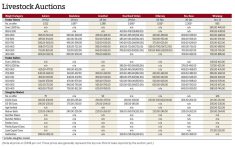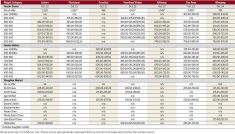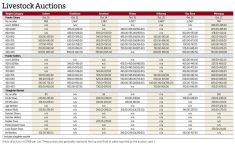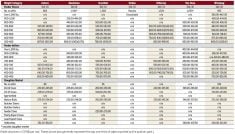Frigid temperatures kept some cattle sellers at home, but prices remained high during the week ended Feb. 2.
Windchill values dipped below -40 C at times as the cold played a part in reducing the number of cattle going through the rings. In total, 6,218 head were sold at auction, compared to 11,113 during the previous week.
“If guys didn’t have to haul, they didn’t before. You can’t blame them for that. We’re expecting to see definitely more numbers of cattle moving in the next week,” Tyler Slawinski, auctioneer at Gladstone and Ashern Auction Marts, said.
Read Also

VIDEO: Watering system a cattle health win
Portable livestock watering system helps Manitoba beef producer combat foot rot cases on pasture.
Feeder steers weighing under 500 lbs. ranged in price from $260 to $361 per hundredweight during the week ended Feb. 2, compared to $260-$382.50/cwt in the previous week.
Meanwhile, feeder heifers under 500 lbs. sold from $235 to $290/cwt, compared to $220-$307.50/cwt one week earlier. D1 and D2 cows ranged in price from $80 to $103/cwt, with a $3 increase on the higher end.
Slawinski said feeder prices weren’t quite as high as the previous week due to rising corn prices, but he remains optimistic.
“Overall, the cattle market is very strong and very promising looking forward into the future,” he said, adding that sold cattle have been moving east into Ontario lately.
“Grass-fed cattle can be locked up for some pretty decent money coming off grass in the fall.”
On Jan. 31, the U.S. Department of Agriculture released its semi-annual cattle inventory report, which reported its national herd was 89.3 million head as of Jan. 1. The figure was three per cent lower than last year’s and it was the lowest since 2015. There were 28.9 million beef cows in the U.S., down four per cent from last year.
On the Chicago Mercantile Exchange (CME), the April live cattle contract had a contract-high close of US$163.825/cwt on Feb. 2, a weekly gain of US$3.30. Meanwhile, the March feeder cattle contract closed at US$185.925/cwt, US$3.075 higher than one week earlier.
Slawinski added that cold weather as well as the CME futures can negatively affect prices in the coming weeks.
“If grain (prices), all of a sudden, spike for some reason or if there’s a shortage, that can definitely play a role,” he said at the President’s Banquet at Winnipeg’s Victoria Inn on Feb. 2. The event included topical sessions, panel discussions, and a trade show.
Six resolutions were debated on Feb. 2, all of them motions to lobby the provincial government and/or a provincial body: sending financial assistance for a fencing program to keep wildlife from eating stockpiled feed; reinstating resources to address predation; streamlining and simplifying programs to secure access to agricultural workers for Canada; re-opening previously closed Manitoba Agricultural Service Corp. offices; reminding members to provide written notice to Keystone Agricultural Producers in order to be exempt from levies; and revisiting funding needs for veterinary service districts.
“We definitely need to look at the new regulations coming in,” Slawinski said. “(MBP) still needs to be the voice of the cattle producer and they’ve been doing a good job so far.”


